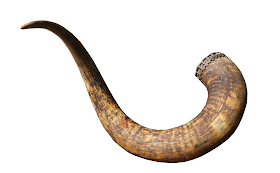Currently, the main focus of de-extinction initiatives is on the woolly mammoth, the thylacine and the passenger pigeon. The aurochs is rarely ever considered for de-extinction, although it would actually be the prime candidate for it. In this post, I want to outline why I think the aurochs would be the ideal de-extinction candidate.
1. It would be an easy win for de-extinction as even one allele would be a success already
Aurochs and cattle are basically one species, albeit not being identical. Actually, cattle are basically aurochs modified by the domestication process. A de-extinction project would therefore have to reverse the domestication process in the genome of cattle in order to achieve an aurochs. Even a single one aurochs allele that was lost during domestication would be a success already. I am not in favour of constructing a morphological aurochs by investing a lot into research on what specific alleles code for specific aurochs traits as this would neglect a lot of important differences between wild and domestic in Bos primigenius/taurus, such as endocrinological, behavioural, digestive and genomic/physiological fitness differences. A cheaper and more effective way to get to a functional and “true” aurochs would be to compare the genomes and see where the differences are and simply edit-in aurochs alleles that domestic cattle have lost. A first step could be to edit-in aurochs alleles that zebu share with the European aurochs that domestic cattle have lost, therefore to accumulate wildtype alleles present and dispersed in the domestic cattle population today in one animal. Then the next step would be to step-by-step introduce more aurochs alleles into the modified cattle with each generation.
Performing this stepwise approximation of an extinct animal with cattle and their wildtype would therefore be a cost-effective and easy win for “de-extinction”, with the advantage that the intermediary generations are not hybrids of doubtful ecological and behavioural suitability, as cattle and aurochs are largely identical on these aspects. It would be getting the animals ever more efficient for their natural habitat and survival in nature until the optimum, the wildtype, is reached.
2. It would be way less costly
Not only would much less research work be necessary (one would not have to research which alleles cause the aurochs horn shape or bodily morphology or physiological differences), it would work with animals that are easily available, cheap and not endangered, practically to handle and with a well-researched reproductive biology.
3. The differences between cattle and aurochs are way smaller than between animals separated by millions of years of evolution
As cattle are basically modified aurochs, there would be no frictions in having a more aurochs-like calf carried out and raised by a “normal” domestic cow and to have them living in a herd of its de-facto conspecifics. Also, since cattle are a species that relies less on cultural behaviours adapted to the needs of a specific habitat and more on instincts, there would be less issues for the life of the hybrids in the wild, especially as cattle and aurochs already occupy the same niche and habitat, since cattle are modified aurochs. There is simply a way higher chance of succeeding due to cattle and aurochs being much more similar to each other than the other de-extinction candidates to their closest living relatives.
4. We have enough genomes for a population
Currently, we have 38 genomes of aurochs from different regions and timeframes of Eurasia, which is probably the highest number of genomes resolved from an extinct animal and they most likely cover a broad range of genetic diversity. Probably the amount of genetic diversity recovered for the aurochs is greater than what is present in the extant wisent population, which descend from merely 12 individuals of which 11 were from the same region. Therefore, we very likely have enough aurochs diversity recovered in order to recreate a healthy, self-sustaining population. Not to forget, we also have domesticated aurochs (cattle) that can be used for outbreeding anytime.
5. It would be less controversial (not that long extinct, it is uncontroversial that we wiped it out, it is an animal many are familiar with (cattle), use in conservation)
The aurochs died out very recently and there can be no doubt that it was us humans who drove them to extinction, thus it is more apparent to the public that this bovine has a place in the modern world. It should also be apparent that recreated aurochs fulfil a use in landscape conservation and maintaining biodiversity, as robust cattle are already used in this job. Aurochs just would be more efficient at this.
6. It could be a “prove of work” for de-extinction
Many are critical of de-extinction because, despite the idea being around since the 1990s, it has never succeeded in creating viable individuals let alone populations of once-extinct animals. With the aurochs, such a “prove of work” could be achieved with a higher probability of succeeding and in a much shorter timeframe, with the results being fit for the habitat they are supposed to live in in any case (as cattle already are).
Therefore, the aurochs would be the most cost-effective candidate with the highest chance of succeeding without having to risk the well-being of an endangered animal, with the resulting hybrids being perfectly fine in their habitat and in herds with their conspecifics. And the project as much as the outcome would be way less controversial, but still can be considered the first success of de-extinction.


































